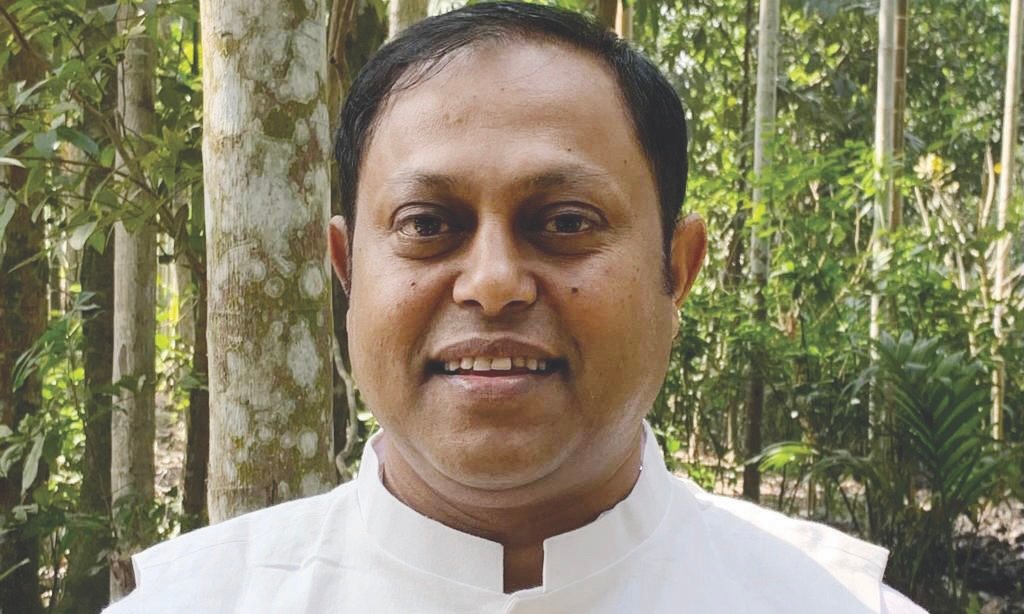
Although global warming is a factor behind the continuous rise in temperature in Bangladesh, the domestic causes are far greater. For more than four decades, unplanned urbanization has continued in Dhaka and across the country. Wetlands and reservoirs have been filled in, trees cut down, and buildings constructed without any consideration for the environment or ecosystem. As a result, air pollution in Bangladesh has broken all previous records, contributing to rising temperatures. While there are policies to address this, their implementation has been deeply disappointing.
These were the remarks of Professor and researcher Dr. Abdus Salam of the Department of Chemistry, and Dean, Faculty of Science, University of Dhaka, in a conversation with Energy & Power Editor Mollah Amzad Hossain.
The World Bank recently released a study, saying that Bangladesh annually loses Tk 21,000 per capita due to rising temperatures. What is your view of this study?
Look, the bigger issue is not the exact financial loss, but rather that the World Bank has presented data on temperature rise and its impacts. That is commendable. The more such studies and research are conducted, the more they will help create awareness and drive action. The World Bank is Bangladesh’s biggest partner in efforts to reduce temperature rise and curb air pollution. For example, three projects—AQMP, TASE, and BEST—have been implemented for this purpose. This study should have highlighted how successful those projects were in achieving their goals. At the same time, it should have included policy-level and implementation-level recommendations on what actions are needed.
Data shows that since 1980, temperatures in Bangladesh have risen alarmingly. The situation in Dhaka is even worse. Does this mean Bangladesh has not taken any initiatives during this long period to prevent it?
In practice, no effective initiatives were taken for a long time to curb rising temperatures. In fact, Bangladesh has gone in the opposite direction. Activities such as blocking water bodies, cutting down greenery, and pursuing unplanned urbanization have continued. As a result, during this period, temperatures have increased by 1.5 to 2 degrees Celsius.
In Dhaka, the effects of rising temperatures are much greater in areas like Motijheel and Tejgaon compared to Ramna or the Cantonment. Sustainable urbanization was never implemented in the capital according to proper regulations. Dhaka’s reservoirs have gradually disappeared, canals have vanished, and low-lying wetlands around the city have been filled to build housing. As a result, the very features that could have helped reduce temperatures have been systematically destroyed—and this continues.
Although policies for sustainable urbanization have been framed at different times in isolation, weak implementation has meant they have achieved no results. Despite repeated research highlighting these issues, policymakers have not paid attention. As a result, the destruction of the environment and ecosystem continues across Dhaka and the country.
To what extent do you think global warming is responsible for Bangladesh’s rising temperatures, compared to internal causes?
Both play a role. Let me start with global warming. Bangladesh has virtually no contribution to global warming, yet it is suffering its consequences to the fullest. This is causing massive financial losses across sectors such as agriculture, health, and labor productivity.
However, Bangladesh’s current situation owes more to internal mismanagement than to global causes. Air pollution here is far worse than in many other countries. Carbon dioxide and black carbon are major contributors to rising temperatures, and methane also plays a role. In Bangladesh, black carbon is generated from the use of low-quality fuels and waste burning. This could be reduced by using higher-quality fuels.
It should be noted that government action to phase out two-stroke engines significantly reduced black carbon pollution, especially in Dhaka. Currently, the concentration of black carbon in the air is 40–50 micrograms per cubic meter. Beijing in China once faced similarly severe black carbon pollution, but through coordinated action, they were able to reduce it to just 2–12 micrograms per cubic meter.
Various studies have said that Bangladesh’s unplanned urbanization, especially the destruction of wetlands and greenery, has led to today’s situation. What is your view?
Unplanned urbanization is continuing across the country. In Dhaka and other cities, filling up wetlands to construct buildings, cutting down trees, and encroaching on surrounding water bodies have become a daily phenomenon. This trend, which has existed in the past, is still ongoing. Although laws exist against it, there is no initiative to enforce them.
Especially to save the capital, it must be made mandatory to comply with all regulations before constructing new buildings. The precondition for establishing residential areas is that they must include lakes and water bodies, as well as open spaces and playgrounds. If that can be ensured, it will be possible to control the trend of rising temperatures.
Urban planners argue that Dhaka lacks building codes that allow for natural cooling. As a result, buildings have become “heat boxes.” The widespread use of air conditioners to cool them is contributing to the temperature rise. What do you say?
The buildings being constructed today, in Dhaka and across the country, are not environmentally friendly. Their designs do not ensure natural airflow. Like in other countries, glass is being used extensively in building facades, but this is not environmentally appropriate at all. As a result, these buildings have turned into “greenhouses”—essentially heat boxes. To cool them down, artificial cooling systems are used. While they make the inside cooler, they release heat into the outside air, thereby contributing to the rising temperatures in Dhaka and other cities.
If you go back 40 years, the use of air conditioning in the country was very rare. But now, most commercial and residential buildings use air conditioning extensively. And people have little choice, since buildings are not designed to allow natural ventilation. This, in turn, contributes to rising temperatures. To generate the extra electricity required for this cooling, greenhouse gas emissions are increasing as well. If strong measures are not taken to curb this trend in future construction, the situation will only get worse.
In several studies, you have shown that the failure to take consistent and appropriate steps to control air pollution has played a major role in the temperature rise. Can you explain this?
Look, those of us engaged in research conduct surveys to reveal the real situation. Our studies show why this is happening and recommend ways out. But the responsibility to implement those recommendations lies with the state. In other words, politicians who are in government must take this responsibility. They need to formulate necessary policies and, more importantly, ensure their implementation.
The problem is not that the country lacks good policies. There are good policies, and projects are taken under them. But implementation is very disappointing. Despite huge spending, there has been no success in reducing air pollution or temperature rise. As I’ve said before, if Bangladesh were to use fuel to international standards, black carbon pollution could be reduced effectively. But whenever this issue comes up, we hear that the Eastern Refinery cannot supply such fuel. Then why is ERL not being made capable of doing so?
We must remember: there is no alternative to reducing air pollution and curbing rising temperatures to protect people. So we need to adopt policies following the good examples set by the world. But policies alone are not enough—their implementation must also be ensured. That is Bangladesh’s greatest challenge.
Everyone knows that if no action is taken now, cities will soon become unlivable. What initiatives should the state take? With the national elections coming up, what kind of commitments should political parties make in their manifestos regarding protection from rising temperatures?
You are right. Civil society must play its role by building public opinion and creating pressure. Each citizen must also commit to refraining from activities that increase pollution. But the main responsibility lies with politicians, those who will govern and work for public welfare.
That is why, ahead of the upcoming February elections, political parties must make clear declarations in their manifestos about reducing air pollution and preventing rising temperatures to ensure sustainable urbanization. But this should not be just words—they must also outline concrete action plans for how they intend to implement these promises. That way, once they come to power, they can immediately begin work on these issues.
Download Interview As PDF/userfiles/EP_23_Interview_8.pdf



